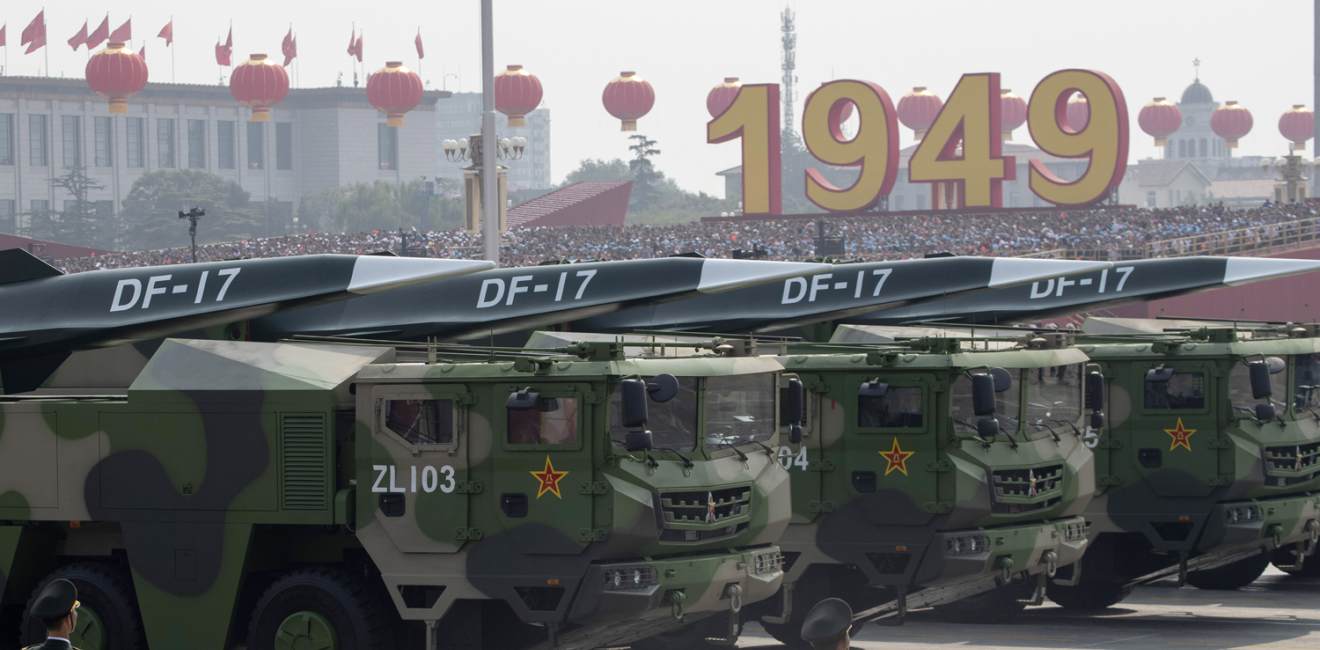
A blog of the Indo-Pacific Program
Earlier this year, the Trump administration announced its plans to leave the Intermediate-range Nuclear Forces (INF) Treaty – both in reaction to reports that Russia had violated the terms of the Treaty and to expand U.S. military options to counter China’s rising military capabilities in Asia. This was a move that Beijing has criticized repeatedly, and its language has recently evolved to include thinly-veiled threats toward any Asian country that would consider hosting U.S. ground-based missiles.
Speaking to a regular press conference at the end of October 2019, a spokesperson for the Chinese Defense Ministry expressed Beijing’s “resolute opposition” to plans by the United States to deploy intermediate-range missiles to the Asia-Pacific. He declared that “if the U.S. forces its way through, it would severely sabotage regional countries’ security interests and harm peace and stability.” How Beijing reacts to U.S. plans to develop and deploy these weapons will be deeply consequential to the military competition that is intensifying between Washington and Beijing, and for the long-term stability of the Indo-Pacific.
When the INF Treaty was signed in 1987, China was still a relatively weak country with a large, obsolescent military focused more on internal missions than projecting power externally. Beijing did possess nuclear weapons and ballistic missiles, but in a quantity that did not warrant a role in international negotiations about missiles and nuclear arms. Yet this changed as China’s military – the People’s Liberation Army (PLA) modernized and grew more sophisticated – and in the early 2000s the Pentagon sought to engage with the PLA on issues related to nuclear weapons and strategic stability.
In 2005, Secretary of Defense Donald Rumsfeld visited the headquarters of China’s Second Artillery Corps. House Armed Services Committee Chairman Representative Ike Skelton visited the same headquarters in August 2007. These engagements culminated in official “expert” talks on nuclear strategy between the PLA and the U.S. military in April 2008. Yet despite this apparent momentum, those proved to be the only official dialogue that has taken place between the two militaries on nuclear issues. To date, most discussions on these issues occur in so-called “Track 1.5” dialogues between scholars from both sides – some of which at times will have military officials from both sides participating.
The primary reason for these talks stalling was Beijing’s reluctance to engage in a meaningful dialogue on nuclear issues with the United States. They do not see the benefit of such discussions, and argue that China’s nuclear forces are so much smaller than those of the United States or Russia that any discussion of arms control is inappropriate. It’s true that China’s nuclear forces are estimated to number in the hundreds while those of the U.S. and Russia are over 6,000 each.
Eleven years after the first and only dialogue between the PLA and U.S. military on nuclear strategy, these issues are of far greater strategic salience. As former U.S. Pacific Command Commander Admiral Harry Harris testified in 2017, Beijing today “controls the largest and most diverse missile force in the world, with an inventory of more than 2,000 ballistic and cruise missiles” – 95 percent of which, according to Harris, “would have been prohibited by the INF Treaty, had China been a signatory.”
This history of Chinese reticence to talk, and its significant investments in INF-range missiles, undermines Beijing’s criticism that U.S. plans to develop and deploy ground-based intermediate-range missiles are destabilizing and dangerous. The Pentagon is understandably responding to an increasingly contested environment developed by the PLA that is designed to threaten U.S. military aircraft and ships at sea in a conflict and, therefore, deter, delay, or deny a U.S. intervention in China’s periphery. As a colleague and I have written elsewhere, these capabilities would enable the U.S. military to defend itself and its allies along China’s periphery in a way that is more efficient, effective, survivable, and sustainable than if the U.S. continued to rely on air- and sea-based capabilities alone. In fact, for U.S. military planners, Chinese criticism may feel like a positive indication.
While Washington has options to try to mitigate any efforts by Beijing to coerce its allies and partners, such threats will likely have a chilling effect for even the closest of America’s Indo-Pacific friends.
That is not to say that there are not challenges involved in the development and deployment of such systems to the Indo-Pacific. No American ally or partner has yet to agree to host such a capability, which could force the United States to house the missiles on U.S. territory and plan to disperse and deploy them during a time of crisis. Yet a mid-crisis deployment would have significant implications for crisis management, and could be interpreted as an escalatory preparation for conflict – potentially convincing an adversary to attack before the missiles can deploy.
Finally, Beijing seems to be threatening the United States as well as any ally that would allow these missiles to be deployed to their territory, vowing that it would “not stand idly by” and threatening countermeasures. The Director of the Foreign Ministry’s Arms Control Department warned South Korea, Japan, and Australia to “exercise prudence,” warning that such a decision does “not serve the national security interests of these countries.” This is likely a reference to China’s unofficial economic sanctions against South Korea for agreeing to allow the United States to deploy the THAAD missile defense system to its territory; sanctions which are estimated to have cost South Korea $15.6 billion in 2017 alone. While Washington has options to try to mitigate any efforts by Beijing to coerce its allies and partners, such threats will likely have a chilling effect for even the closest of America’s Indo-Pacific friends.
If anything, these developments should reinforce for Washington and Beijing alike the need for sustained, high-level, military-to-military dialogue on issues of strategic stability. If China has genuine concerns about the destabilizing potential of these capabilities, this would be the most appropriate venue for their concerns to be aired and discussed. Otherwise, as with THAAD and several other military deployments that Beijing has opposed, Washington will likely be forced to continue to adapt its military posture in order to ensure it retains the ability to defend itself and its allies from China’s growing military challenge. Without dialogue and diplomacy to manage this dynamic, the U.S.-China military competition could rapidly generate a costly arms race that would not be in the interest of either side.
Author


Indo-Pacific Program
The Indo-Pacific Program promotes policy debate and intellectual discussions on US interests in the Asia-Pacific as well as political, economic, security, and social issues relating to the world’s most populous and economically dynamic region. Read more





